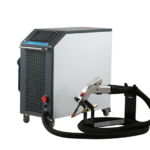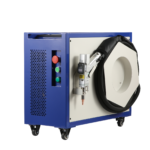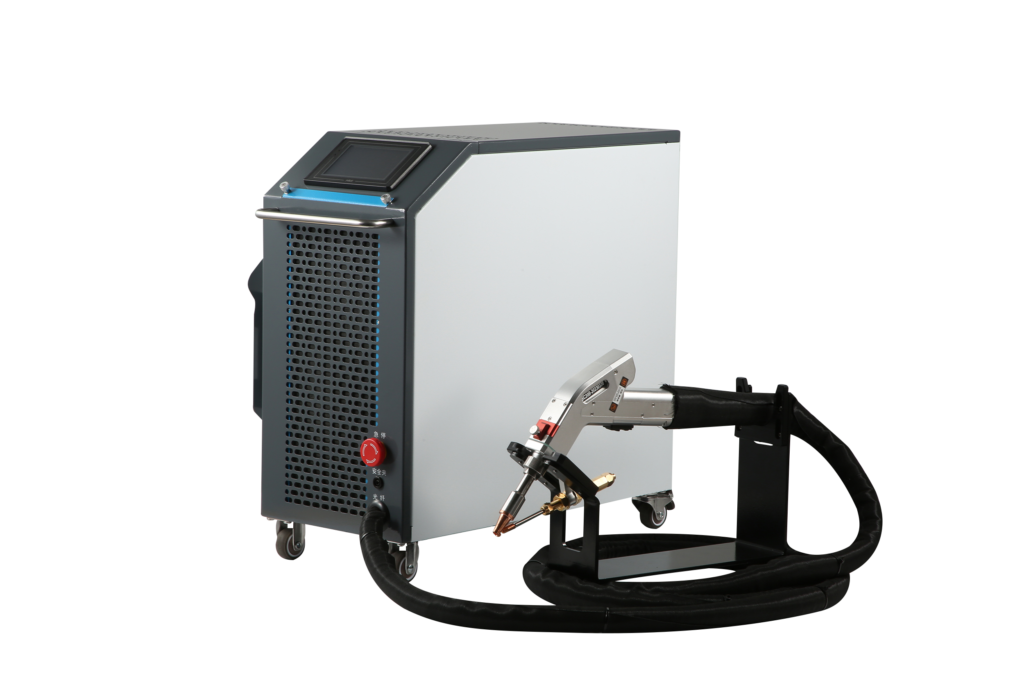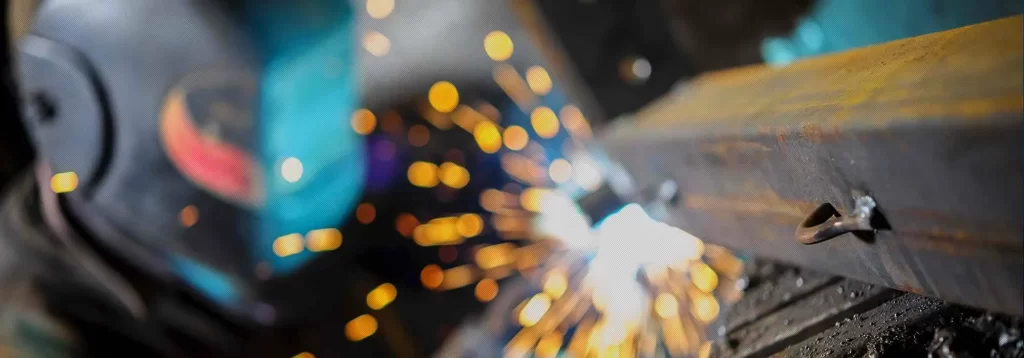Handheld laser welding system is highly accurate and precise compared to the traditional 激光焊接机 and other welding systems such as TIG and MIG welding. 然而, even though the laser welder has advantages over conventional methods, it also has disadvantages. 因此, getting to know the two welding processes, as depicted in this article, can help make the right decision.

How Does a Handheld Laser Welder Work?
手持式激光焊接机 uses generated laser beam to melt and join two materials. The laser source can be fiber or solid-state, and it determines the welding speed and rate.
These machines are versatile and compatible with different material types and of different complexity in terms of design. They can melt and join thin and thick materials with accuracy making them suitable for welding small parts that require minimal distortion because the heat source is focused on a particular area.
Handheld Laser Welding Machine: Pros and Cons
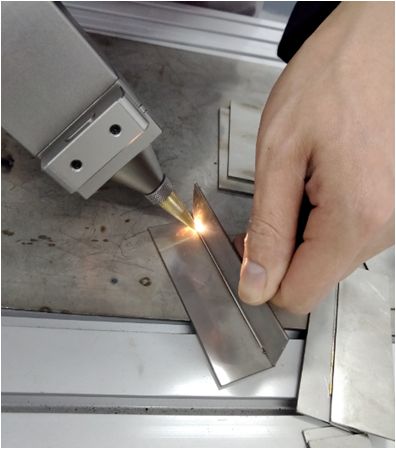
A handheld laser welding machine can create strong seams even at room temperature. This machine is an improvement to traditional techniques. Below are the pro and cons of the machine.
· Portability
尺寸小且重量轻. 因此, 这使得它对于现场和异地操作都很有用. 用它, 您可以精确地焊接具有复杂设计或大型零件的零件.
· Versatility
它与多种材料类型兼容. 此外, 它适用于不同和相似的材料. 然而, 对于异种材料, there is a need to check for material compatibility using their chemical and physical properties.
· Welding Speed
Laser welding system generally has a fast welding speed due to the highly concentrated heat source. 因此, they are the better choice for production efficiency.
· Heat Input
Compared to other methods, the handheld laser welder’s low heat input makes them ideal for joining thin, delicate parts. Other methods can lead to charring and dimensional inaccuracy.
Handheld laser welders also have their shortcomings, including the following:
· Initial Investment
The cost of running a handheld laser system is quite high. In addition to the initial investment, the maintenance fee and labor cost contribute to the overall expenses associated with this machine.
· Power Output
Compared to other methods, 手持式激光焊机的功率输出相对较低,这可能是一个优点,但在焊接效率方面存在缺点.
常见的传统焊接技术有哪些及其工作原理?
以下是传统的焊接技术及其工作原理:
· 金属惰性气体保护焊 (我)
这种焊接技术通过将填充物熔化到相邻部件形成的焊接接头中来焊接两种材料. 直流电 (能量源) 创建弧线, 因此焊接技术的名称.
通常, 直流电是提供电能的电源,可熔化填充材料,同时在工件中产生电弧. 正在冷却, this joins the two materials.
Concurrently, an inert gas, usually argon and helium, travels through the welding head. These gases shield the weld zones from atmospheric contamination. Its efficiency and creation of uniform and clean seams make it suitable for welding parts in industries that deal with manufacturing and fabrication.
· Tungsten Inert Gas Welding (氩弧焊)
TIG welding uses a tungsten electrode as a filler material. The filler material is unique such that it does not melt. It only supplies the heat which melts the workpiece and joins them on cooling.
TIG welding also uses shielding gas such as helium and argon. 此外, the created welded joint is strong. 因此, they are suitable for joining structural parts.
· Shielded Metal Arc Welding (焊条电弧焊)
这种焊接技术使用预涂焊剂的电极来形成电弧. 如 MIG 焊接, 电极熔化材料表面,同时充当填充材料, 形成熔池. 还, 熔化时的助焊剂涂层无需外部保护气体,从而提高焊接质量, 留下高机械强度的接头. 电极类型和焊剂成分各不相同. 基材特性和焊接参数影响选择过程.
· 氧乙炔焊接 (OAW)
氧乙炔焊接使用氧气和乙炔气体将金属连接在一起. 乙炔气, 碳和氢的组合, 是一种燃气. 有氧气存在的情况下, 乙炔气体燃烧并产生高温火焰,其温度足以熔化大多数金属. 两种气体的比例正确, 氧乙炔提供灵活高效的焊接操作.
此外, 氧乙炔焊接工艺主要用于高熔点金属. 然而, 它还可以针对非金属材料进行优化, 包括热塑性塑料和玻璃. 重要的是要注意控制温度,因为过热可能会损坏材料的结构.
传统焊接技术: 的优点和缺点
考虑TIG, 我, 与其他传统焊接技术相比,原因如下:
· 运营成本
上述许多传统工艺都是具有成本效益的选择. 运营成本较低,不会对公司财务产生重大影响. 这些机器价格实惠,不需要大量投资来培训操作员. 此外, 许多企业都可以轻松使用它们.
· Weld Strength
These processes can create more durable welds. The heat generated by the welding arc gets transferred to the base material quickly. This creates a strong bond that can withstand stress and vibrations.
· Versatility
Most conventional welding methods are versatile as they can produce temporary and permanent welds on metals, thermoplastics and glass.
· Material Thickness
The total heat input is high, which makes them suitable for thick materials.
Conventional welding has some shortcomings, which include:
· Part Deformation
Most of these conventional methods are associated with an unintended heat transfer to the surrounding material. This high heat-affected zone area deforms thin materials and parts.
· Welding Rate
The arc welding method is time-consuming. It requires multiple passes to complete a single welding operation. 此外, most welds require post-welding grinding to remove surface irregularities.
Handheld Laser Welding Vs Traditional Welding
Let’s compare both welding operations!
· Cost and Ease of Use
Handheld laser welding machines come with a relatively high investment. 此外, the servicing and maintenance fees are also considerably more compared to the traditional methods.
Regarding ease of use, traditional methods require technical expertise, which can increase operating costs. 此外, handheld laser welders have easier to use. Some models even feature automation which increases operational use.
· Speed and Production Efficiency
With a faster heating and cooling rate, handheld laser welders are better than traditional methods. 因此, they are more efficient and productive in terms of small-scale welding. 然而, in large-scale welding, traditional methods are more suitable due to the higher long life compared to laser welders.
· Heat Affected Zone (热影响区)
焊接接头周围温度明显升高的区域也区分了不同的焊接工艺. HAZ 更小,因为激光焊接是一种使用聚焦激光束的非接触式工艺.
另一方面, 大多数传统焊接技术产生的热量会广泛影响周围的材料. 这可以通过再结晶改变金属的微观结构, 相变和沉淀. 此外, 传统焊接方法的热影响区面积不同. HAZ MIG 焊接产生的热量相对较大,因为它具有较高的热输入.
· Precision and Control
激光焊机的控制水平取决于自动化水平. 尽管如此, 操作员拥有完全控制权. 这比传统焊接技术更好, 其精度较低, 没有自动化, and require high control and focus.
此外, the accuracy and precision of the final weld made with traditional methods may be lower. 然而, using a highly skilled operator can overcome this shortcoming. By overseeing the process, the consistency of the final weld may be similar to laser welds.
· Material Compatibility
Laser welding has wide material compatibility, although it is more suitable for thin parts. The smaller heat-affected zone they produce makes them the method of choice for delicate and heat-sensitive materials.
另一方面, the material compatibility of traditional techniques depends on the method used. Most are strictly for joining metals and may be less effective for non-metallic materials. 然而, traditional welding techniques are better for very thick parts because of their high heat input.
· Applications
尽管制造和维修操作使用不同的焊接方法, 它们在行业中的应用有所不同. 手持式激光焊接机更适合小规模焊接以及薄型材料的焊接。, 精美的, 或复杂的设计.
然而, 传统方法, 尤其是米格焊接, 更适合底盘和车架. 此外, 电弧焊在电子工业中的应用有限,因为它会不可逆转地损坏电子元件.
结论
Handheld 激光焊接机 are becoming popular in several part manufacturing industry. 与传统焊接技术相比,它们有一些优点和缺点. 因此, 他们有不同的应用. 本文比较了两种焊接系统, 告知您为您的项目选择合适的产品. 如有任何问题, 有关不同焊接方法的信息请联系我们.

